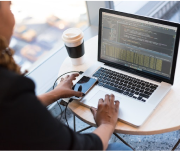CMMI 3.0 究竟包含了哪些实践域?
版权声明
我们非常重视原创文章,为尊重知识产权并避免潜在的版权问题,我们在此提供文章的摘要供您初步了解。如果您想要查阅更为详尽的内容,访问作者的公众号页面获取完整文章。

CMMI 3.0 Practice Domains Summary
The Capability Maturity Model Integration (CMMI) version 3.0 encompasses 31 practice domains covering diverse areas such as development, services, supplier management, personnel management, security, data management, and remote delivery. This article succinctly summarizes the core content of each practice domain to facilitate a rapid understanding of the model's scope. While CMMI 2.0 has an official Chinese translation, which has been a subject of debate, CMMI 3.0 lacks an official Chinese version. The names of the types, capability areas, and practice domains mentioned in this article are interpretative translations aimed at being clear and easily understandable, and may differ from the official Chinese nomenclature.
Delivery "Doing"
- Service Delivery Management (SDM): Establish and update service agreements and systems; deliver services.
- Strategic Service Management (STSM): Identify, define, maintain, and use common services.
- Technical Solution (TS): Design and implement products or services.
- Product Integration (PI): Integrate and deliver products or services.
- Peer Review (PR): Expert review of various work products to detect issues promptly.
- Process Quality Assurance (PQA): Check the consistency of processes and work products with organizational standards.
- Requirements Development and Management (RDM): Activities surrounding requirements acquisition, analysis, description, communication, confirmation, and change management.
- Verification and Validation (VV): Ensure requirements are met through various means like testing, reviews, prototypes, modeling, and trials.
- Supplier Contract Management (SAM): Select qualified suppliers, sign contracts, and manage contract execution.
Managing
- Business Continuity (CONT): Identify potential business disruptions, devise and execute continuity plans.
- Incident Handling and Prevention (IRP): Prevent and handle various incidents.
- Risk and Opportunity Management (RSK): Develop and implement plans to address potential good or bad events.
- Enabling Virtual Work (EVW): Define and manage methods for remote delivery and work.
- Organizational Training (OT): Training needs assessment, planning, instructor selection, course development, implementation, and training effectiveness evaluation across teams.
- Workforce Empowerment (WE): Authorize teams, foster competency, promote cross-team collaboration, and define team motivation measures.
- Estimation (EST): Estimate the scope, complexity, effort, cost, duration, and resources needed for tasks.
- Planning (PLAN): Develop reasonable plans and secure commitments to them.
- Monitoring and Control (MC): Oversee task completion according to plans and address issues.
Enabling
- Data Management (DM): Establish, update, implement, and optimize data management methods and mechanisms.
- Data Quality (DQ): Cleanse data based on defined criteria and methods, ensure data quality, and continually optimize data cleansing methods.
- Ensuring Personnel Safety (ESAF): Identify safety hazards in work environments or systems, define safety requirements and strategies, and take measures to eliminate safety risks to individuals.
- Ensuring Information Security (ESEC): Identify information security needs, define strategies, and take measures to mitigate information security risks.
- Managing Security Threats and Vulnerabilities (MST): Identify and address information security threats and vulnerabilities.
- Cause Analysis and Resolution (CAR): Analyze causes of typical good or bad events and implement corrective, preventive, and improvement measures.
- Configuration Management (CM): Ensure correct configuration items through identification, management systems, and configuration audits.
- Decision Analysis and Resolution (DAR): Use structured methods for significant technical and management decisions.
Improving
- Managing Performance and Measurement Data (MPM): Manage process execution results quantitatively, including process efficiency, quality, and product quality.
- Process Asset Development (PAD): Create, update, and manage organizational-level process asset libraries.
- Process Management (PCM): Continually improve processes at an organizational level based on the PDCA cycle.
- Governance (GOV): Top management provides guidance and support for the establishment, execution, and improvement of processes.
- Implementation Infrastructure (II): Supply personnel, knowledge, tools, funding, process definitions, lessons learned, metrics, and oversight for process execution.
麦哲思科技任甲林

麦哲思科技(北京)有限公司总经理 敏捷性能合弄模型评估师 认证的Scrum Master 认证的大规模敏捷顾问SPC CMMI高成熟度主任评估师 COSMIC MPC,IAC 成员,中国分部主席
经验管理是依赖于管理者的经验判断,选择、实施各种措施以达成管理目标的管理方式。管理者的经验有丰富与匮乏的区别,经验也有其适用的范围,有时正确,有时又可能错误。正如我们去看中医大夫,有的大夫经验丰富,很容易就能对症下药,对症后见效很快,但是有时也看不准,如果不对症,则吃了3天后可以进行调整,如果调整仍然不到位,说明经验失效了,这个病不是这个大夫所能应对的。有的大夫经验不够,难以对症下药,下药后见效慢或者无效。中医看病也有其一套推理的规则,这套规则可以称为经验法则、启发式规则或统计推断,从A推理出
时间箱管理是敏捷方法中的一条实践,其含义是在项目中的某些活动的完成时间必须在规定的时间内完成。该实践有助于提高整个项目的工作效率,避免帕金森现象。
在敏捷方法里时间箱管理的具体体现包括:
(1) 每次迭代必须在固定的时间内完成,比如2周或1个月等,本次迭代必须交付一个质量得到充分检验的、可以运行的软件版本,如果有些需求不能在本次迭代内完成,则推迟到下一个迭代中完成。
(2) 项目的策划会议必须在4个小时内完成,某次迭代的策划会议必须在4个


白皮书上线









